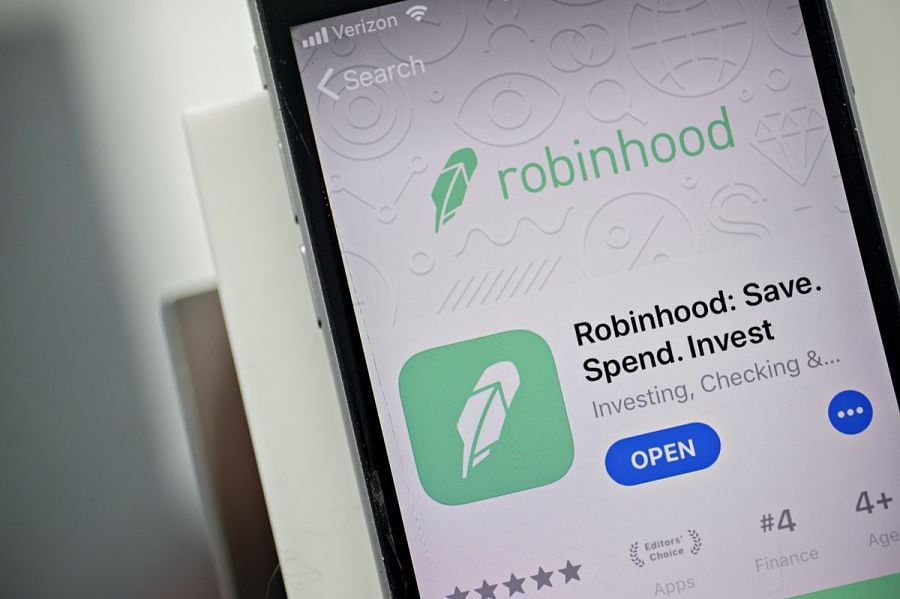

Robinhood Financial has determined that it takes a regulator to deal with the regulators.
The online trading platform’s popularity has skyrocketed over the last several months, as people use its app and website to buy and sell investments — often for the first time.
But its fast growth also has generated increased regulatory scrutiny.
In December, Robinhood agreed to pay $65 million to settle Securities and Exchange Commission charges that it did not execute trades at the best prices for its customers because of agreements to send its order flows to certain firms.
In a separate action, Massachusetts Secretary of the Commonwealth William Galvin charged Robinhood with violating the state’s new fiduciary rule by the way it targets users, entices them to trade and fails to maintain the platform’s infrastructure.
Earlier this year, members of Congress pressed Robinhood to increase investor protections on its platform in the wake of the suicide of one of its users.
The person leading Robinhood’s response to the regulators and lawmakers is former SEC Commissioner Daniel Gallagher Jr., who became the firm’s chief legal officer in June.
Previously a Robinhood board member, Gallagher moved to a daily leadership role to help build its legal, compliance and government relations operations.
“We’ve made so many meaningful improvements at Robinhood just in 2020 to the control environment,” Gallagher said. “We’re in a really good place right now.”
Robinhood founders Vladimir Tenev and Baiju Bhatt seem to have brought the same intensity to shoring up the firm’s compliance function that they did to developing its technology.
“They had this vision for best-in-class legal and compliance and thought I was the one who could help them do it,” Gallagher said.
But his work at the SEC — as a commissioner from 2011 to 2015 and as a staffer and co-director of the Division of Trading and Markets from 2008 to 2010 — means that Gallagher’s move to the private sector has taken him through the revolving door.
Whenever that door swings back and forth with people going from government agencies to financial firms and vice versa it increases the possibility of regulatory capture.
“There are a lot of questions raised by the revolving door on the intentions of all the parties,” said Scott Amey, general counsel at the Project on Government Oversight. “People with friends in high places are often treated differently than those who are not in the same situation. That can be beneficial for Robinhood but can come at a price to the public, especially when there are serious allegations against a company.”
Gallagher counters that it’s good for financial firms to employ former SEC officials because they bring the agency’s investor-protection ethos with them.
“We’re cognizant of everything the SEC expects and we’re steeped in the ways of the securities laws,” Gallagher said. “We’re an ambassador for that view, which should be elevating everybody’s game. That’s a pretty powerful thing to bring into the private markets.”
In 2014, LPL Financial hired former Vermont securities director John Cronin to help it better supervise its far-flung adviser network. Cronin transitioned to government relations and is now “one part of a concerted effort to create, build and enhance relations with our state regulators,” he wrote in an email.
I saw him do that firsthand during a North American Securities Administrators Association annual conference in Providence a couple years ago. Once a NASAA leader, the affable Cronin was active on the sidelines of the meeting chatting up his former colleagues.
His other role is internal consulting. “The goal of these efforts is to allow [LPL] access to a state regulator’s perspective as they examine issues and respond,” Cronin wrote.
Steven J. Thomas brought the insight of a former South Dakota chief compliance examiner to his role as chief operations and compliance officer at SGL Financial.
“When you teach other examiners, you know what they’re going to be looking for when they come in and examine a firm,” Thomas said. He said firm leaders listened to him when he urged them not to let advisers sell shares in Woodbridge Group, a luxury real estate developer that committed fraud and went bankrupt.
He established when he was hired that compliance would be respected.
“It’s my way or the highway, or I’m not taking the job,” Thomas said.
When erstwhile regulators join a firm, they can attract others from similar positions. Gallagher has hired a number of former high-ranking SEC and Capitol Hill staffers.
The Robinhood government relations team is trying to change how Washington views the firm. Their message is that Robinhood is beefing up compliance but also is attracting new investors to the capital markets.
“Most of it is telling what Robinhood is and how we got started and demystifying and correcting a lot of narratives that have been persisting,” Gallagher said.
Financial firms are smart to hire people like Gallagher to strengthen their relationships with lawmakers and regulators. Yes, there is a possibility that former regulators can pull strings to dilute oversight.
But financial companies and advisers have been breaking the rules ever since the SEC was established during the Great Depression and will continue to do so. It can't hurt — and likely often helps — to have someone on board who can channel regulators' response in order to improve compliance.
The revolving door is more likely to lead to regulatory capture when it swings as an industry official or lawyer takes a break from a Wall Street career to run the SEC. Perhaps that will be the subject of a future column.

Former Northwestern Mutual advisors join firm for independence.

Executives from LPL Financial, Cresset Partners hired for key roles.

Geopolitical tension has been managed well by the markets.

December cut is still a possiblity.

Canada, China among nations to react to president-elect's comments.
Streamline your outreach with Aidentified's AI-driven solutions
This season’s market volatility: Positioning for rate relief, income growth and the AI rebound
